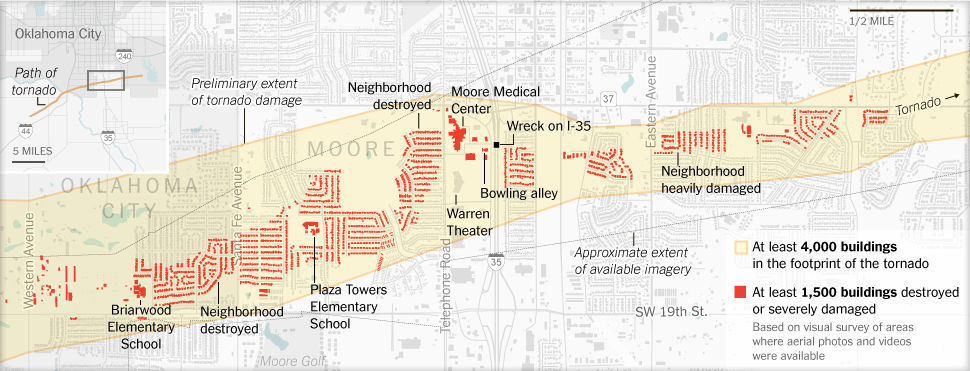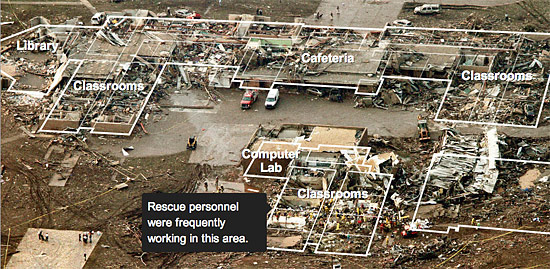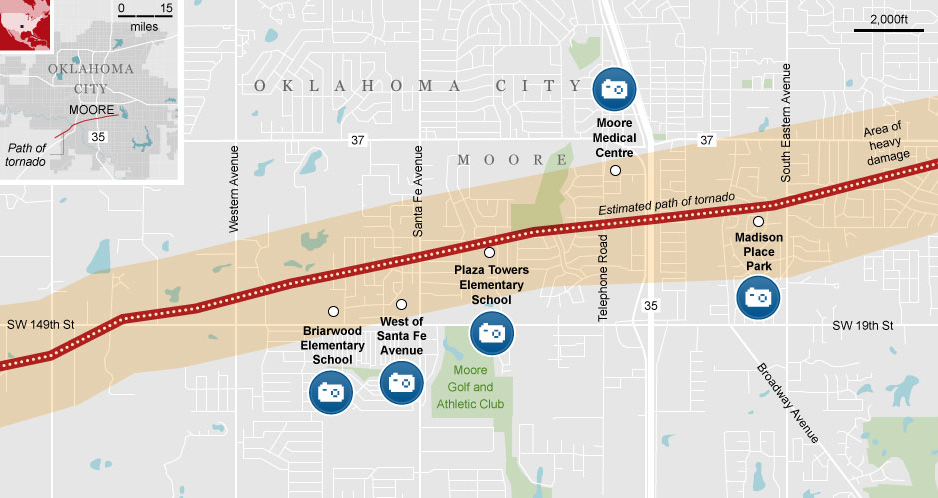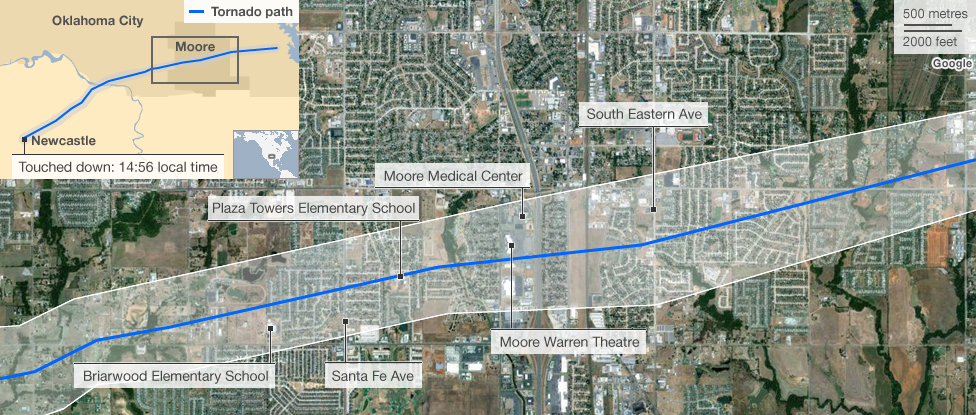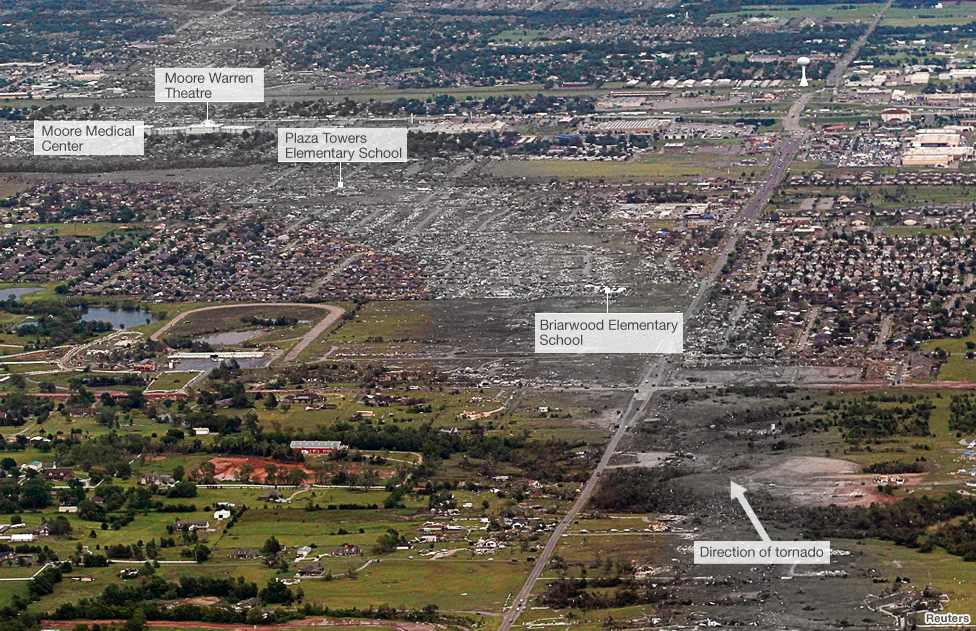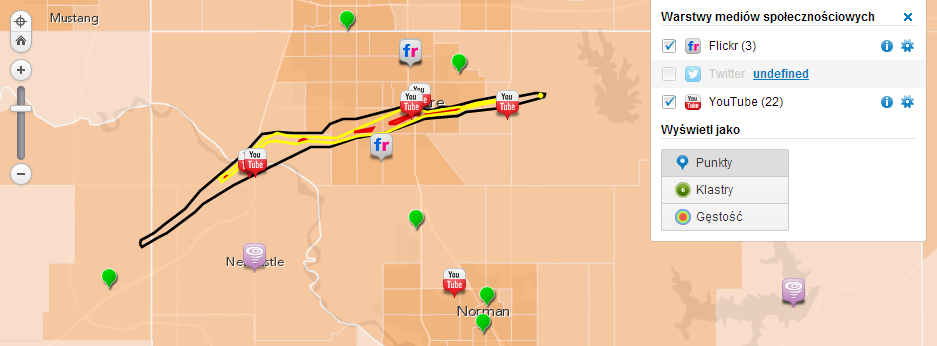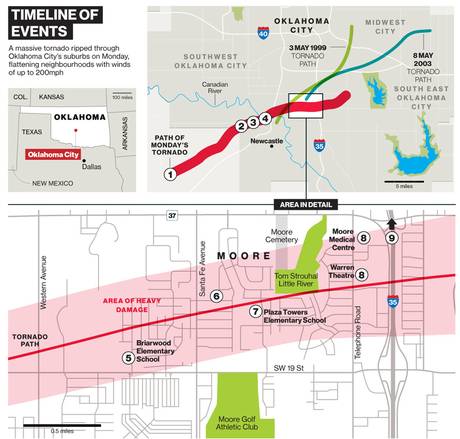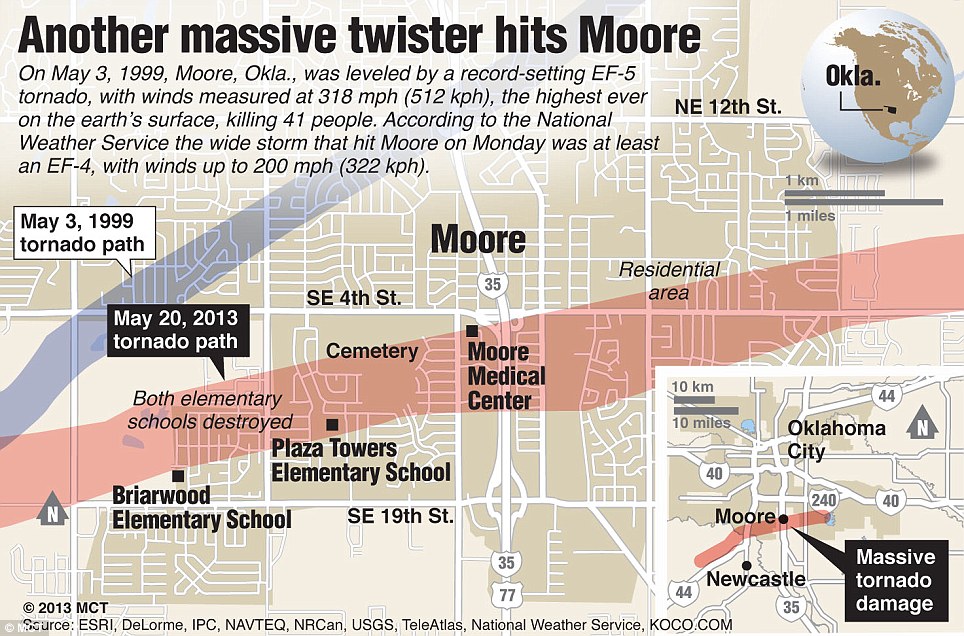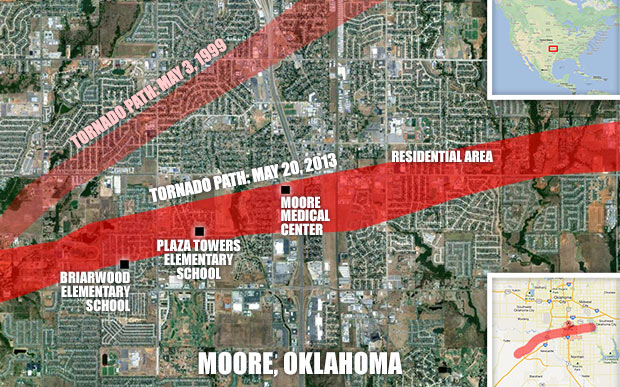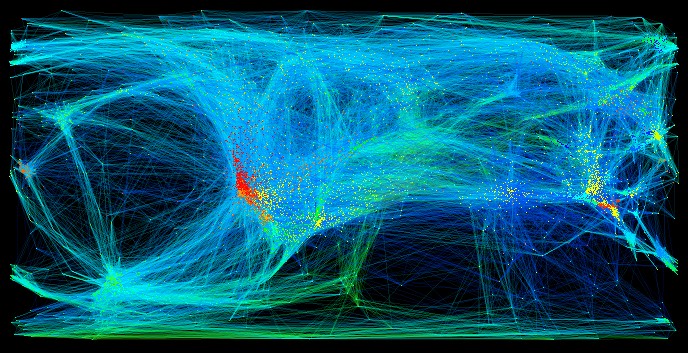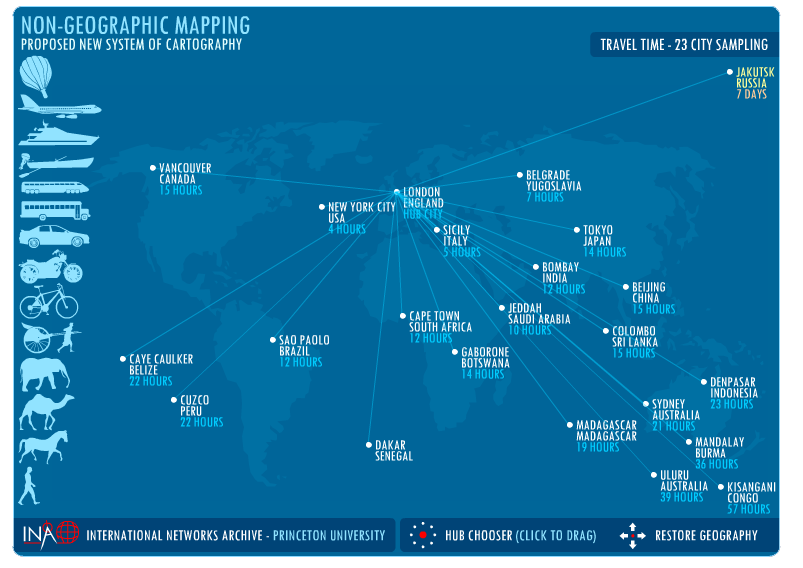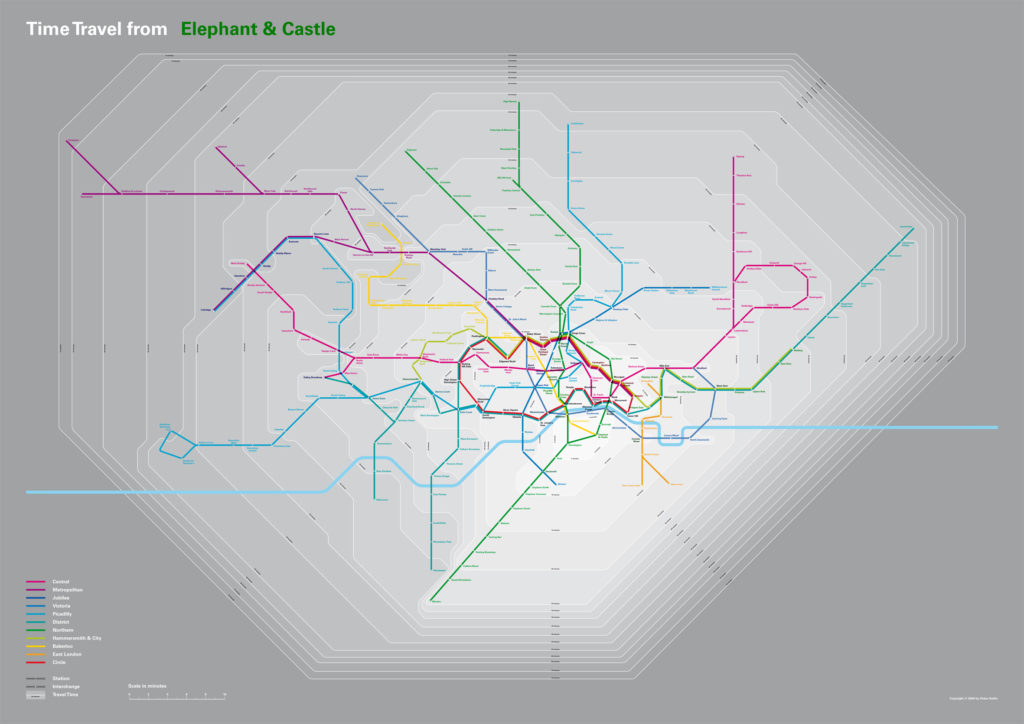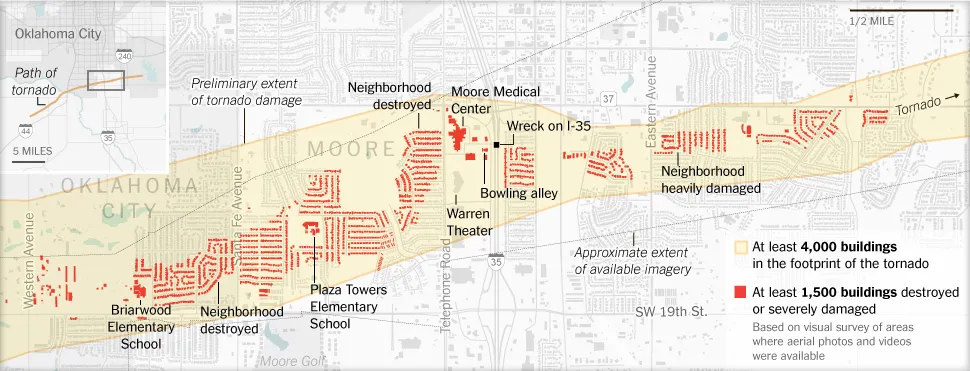
#Featured
#Ideas
How Oklahoma Tornado Was Mapped On Different Web Portals?
On May 20, 2013, a massive tornado swept through the area of Moore, Oklahoma, killing 24 people and left swathes of the suburb of Moore in ruins. In a few hours media around the world mapped the track of the tornado in many different ways. During catastrophic emergency situations like this mapping is one of the basic steps to effectively manage resources to save lives of victims and simultaneously to show people around the world the scale of the disaster.
Here are a few examples:
BBC:
ESRI:
CNN:


#Featured
#Environment
#Featured
#Insights
#People
#Space
Will ESG Reporting Mandates Boost Adoption of Earth Observation Data in Enterprises?
#Featured
#Insights
#People
The Minds Behind the Map: CEOs of Top 15 Geospatial Companies

